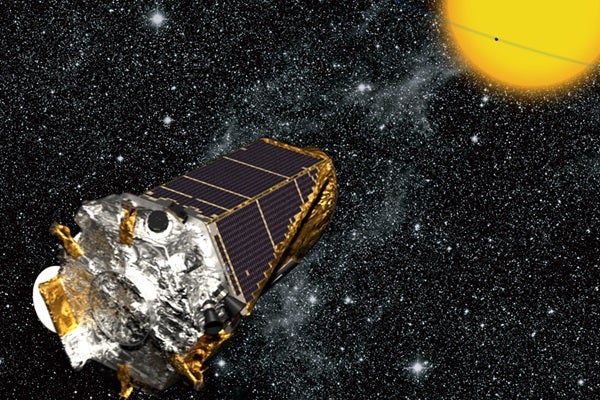Kepler has a set of four wheels that react to changes in the telescope’s position. These wheels keep it pointed in the same direction. On Sunday, one of those wheels stopped working. Although Kepler can function with only three wheels, this latest problem comes on the heels of a previous wheel failure in July, leaving the telescope with only two functioning gyroscopes — not enough for it to stay in its proper orbit and accurately aim.
Kepler monitors the same batch of stars constantly, watching for the small, periodic dip in a star’s brightness that signals a planet’s passage in front of it. These observations require Kepler to keep itself in precise alignment with its 100-square-degree field of view so that all its measurements of a star arrive at the same point on its detector. The current problem makes that stability impossible. NASA controllers are working toward a solution but are unsure that they will be able to fix the failure, which appears to be related to the wheel’s bearing.
The $600 million telescope was slated to last between three and a half and six years. Because the telescope has continued to function past the lower end of that estimate, it has fulfilled its prime mission. Additionally, the terabytes of as-yet-unanalyzed data should keep scientists occupied for two years and reveal even more potentially habitable Earth-like planets. The extended mission, which began in 2012, costs $20 million a year.
Since its launch in 2009, Kepler’s observations have confirmed 132 exoplanets; 2,740 more candidates await confirmation. The mission’s prime directive is to find Earth-sized planets in the habitable zones of their stars, where liquid water can exist. As the telescope has accumulated more and more data on the same field, it has found progressively smaller planets closer to — or inside — the habitable zone. Prior to Kepler’s launch, most discoveries were of gas giant planets that had migrated to orbits close to their stars.
“I am really delighted, frankly, with what we’ve accomplished,” said William Borucki, Kepler science principal investigator at Ames Research Center in California, at a press conference May 15.
But the mission isn’t necessarily over. Borucki holds out hope that with a little help from NASA scientists and engineers, Kepler can right itself and continue to function. “I don’t think I’d be a pessimist here,” he said. ”I really wouldn’t write it off at this point.”
The next space mission to search for exoplanets — the Transiting Exoplanet Survey Satellite — will not be launched until 2017 at the earliest.










